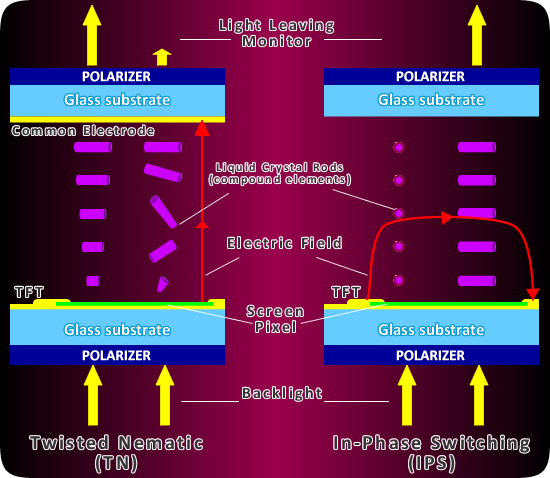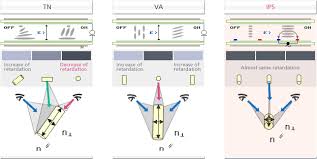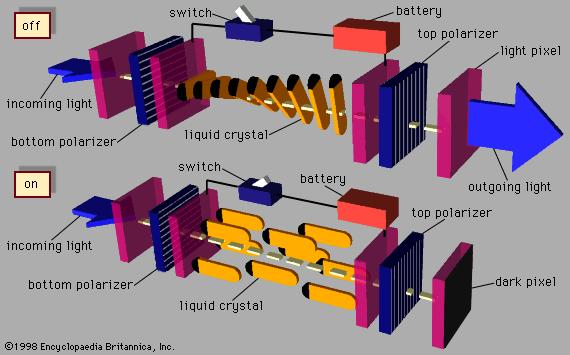|
#2
9th March 2016, 03:42 PM
| |||
| |||
| Re: Tn ips pva
Well TN IPS PVA are the types of the 'thin-film-transistor liquid-crystal display' (TFT LCD) is a variant of a liquid-crystal display (LCD) that uses thin-film transistor (TFT) technology to improve image qualities such as addressability and contrast. In-Plane Switching (IPS) Main article: IPS panel Its name comes from the main difference from TN panels, that the crystal molecules move parallel to the panel plane instead of perpendicular to it. In-Plane Switching was developed by Hitachi Ltd. in 1996 to improve on the poor viewing angle and the poor color reproduction of TN panels at that time. This change reduces the amount of light scattering in the matrix, which gives IPS its characteristic wide viewing angles and good color reproduction  Patterned vertical alignment (PVA) Less expensive PVA panels often use dithering and FRC, whereas super-PVA (S-PVA) panels all use at least 8 bits per color component and do not use color simulation methods. S-PVA also largely eliminated off-angle glowing of solid blacks and reduced the off-angle gamma shift. Some high-end Sony BRAVIA LCD TVs offer 10-bit and xvYCC color support, for example, the Bravia X4500 series. S-PVA also offers fast response times using modern RTC technologies  Twisted nematic (TN) TN display under a microscope, with the transistors visible at the bottom The relatively inexpensive twisted nematic display is the most common consumer display type. The pixel response time on modern TN panels is sufficiently fast to avoid the shadow-trail and ghosting artifacts of earlier production TN displays suffer from limited viewing angles, especially in the vertical direction. Colors will shift when viewed off-perpendicular. In the vertical direction, colors will shift so much that they will invert past a certain angle.  |